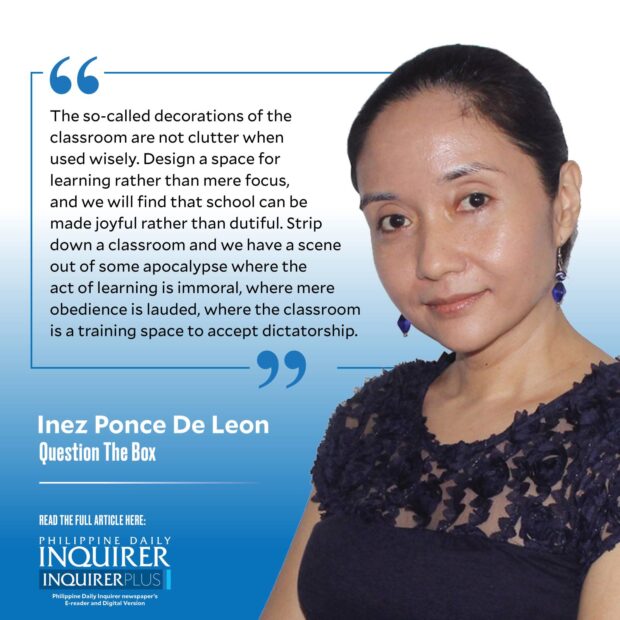Social media platforms have recently been flooded with pictures of teachers responding to the Department of Education’s call for decluttering classrooms to enhance student focus. Research on the impact of classroom appearance on student learning has gained momentum in recent years, particularly for students with learning disorders. Studies generally suggest that less clutter leads to better learning outcomes. These findings could potentially apply to all students, given the overwhelming digital world they already inhabit. However, we must critically analyze these claims, starting with the definition of clutter. According to researchers, clutter refers to items that have no influence on student learning, such as outdated equipment and unused materials. It also includes paraphernalia that has been disputed by research, like the now irrelevant “map of the human tongue.”
Furthermore, it is important to remember that research findings should not be blindly implemented. Researchers do not advocate for completely empty classrooms. Instead, they advise teachers to involve students in the design process and encourage them to express their needs and preferences. This approach helps students articulate their learning difficulties without feeling ashamed. Recent research in New Zealand and the United Kingdom has shown positive results from decluttering classrooms. Strategies such as removing unnecessary posters and replacing them with updated ones relevant to the current year’s subjects, as well as enlisting student input in design decisions, have led to more focused students and calmer teachers. Decluttering should be seen as a deliberate approach to classroom design, involving the designation of specific spaces, rearranging furniture, and incorporating visually stimulating materials on the walls to facilitate interactive learning.
However, the implementation of decluttering measures without student involvement can be detrimental to long-term educational goals. We must closely examine the purpose behind our classroom decorations. Items such as the alphabet, evolutionary timelines, and photos of historical figures hold more than just visual appeal. They represent the legacy we pass on to the next generation, reminding them of our collective history and the struggles we have faced. These posters serve as reminders that learning happens beyond the confines of the classroom and that the lessons acquired are applicable beyond formal lectures.
Embracing a simplistic approach that solely focuses on the blackboard implies that students can only learn when instructed by authority figures. This mindset hinders independent learning and perpetuates the belief that individuals lack the capacity to navigate the sea of knowledge on their own. It sends the message that the world is a confusing place and that students are intellectually and emotionally incapable of handling the influx of information. Instead, classrooms should aim to empower students by training them to filter through information and encouraging them to explore knowledge independently. This approach fosters a lifelong love for learning and the desire to seek answers to their questions.
While this may sound idealistic and perhaps more fitting for affluent societies, we should challenge the notion that we cannot aspire for bigger goals in education and the development of future generations. Classroom decorations, if used thoughtfully, do not constitute clutter. By designing learning spaces that prioritize engagement rather than mere focus, we can create a joyful and inspiring educational environment. A stripped-down classroom devoid of meaningful decorations gives off an atmosphere reminiscent of an apocalyptic setting, where learning is discouraged and obedience is praised. This is particularly concerning in a time when our elementary classrooms are being stripped of their uniqueness and transformed into ordinary rooms, coinciding with the unnecessary push for mandatory military training, which fosters an oppressive brand of nationalism.
In conclusion, the recent call for decluttering classrooms should be approached with caution and thoughtfulness. Decluttering does not equate to empty spaces, but rather a deliberate and inclusive approach to creating a conducive learning environment. By involving students in the design process and recognizing the value of meaningful decorations, we can foster a love for learning and provide students with the tools to navigate the overwhelming amount of information they encounter daily.
Denial of responsibility! VigourTimes is an automatic aggregator of Global media. In each content, the hyperlink to the primary source is specified. All trademarks belong to their rightful owners, and all materials to their authors. For any complaint, please reach us at – [email protected]. We will take necessary action within 24 hours.


